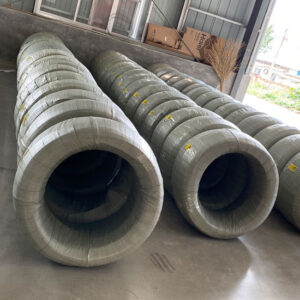ASTM A313 Stainless Steel Spring Wire
ASTM A313 Stainless Steel Wire
Stainless steel is a versatile material common to industrial uses such as lockwire and spring wire, and also used extensively in the medical field due to its ability to meet demanding applications at relatively low cost. Wire can be made as round or flat ribbon and finished in a variety of tempers.
Stainless lockwire conforming to NASM20995 (corrosion resistant steel) is inventoried in common sizes and offered on one to five pound spools. Medical grade stainless alloys are kept in stock for fabrication as bare or film coated wires made to customer specifications.
ASTM A313 / A313M – 18 Standard Specification for Stainless Steel Spring Wire This guide covers standard specification for austenitic and age-hardenable stainless steel round spring wire intended especially for the manufacture of springs. The steel shall conform to the required chemical composition for carbon, manganese, phosphorus, sulfur, silicon, chromium, nickel, molybdenum, nitrogen, and other elements. The material shall conform to the required tensile strengths following the prescribed heat treatment. Tensile strength requirements for hardened wires and stress-relieved materials shall be given. Mechanical tests such as wrap test, uniformity (coil test), and bend test hall be performed on the steel material. This specification covers austenitic, austenitic-ferritic, and age-hardenable stainless steel round spring wire intended especially for the manufacture of springs.
Stainless Steel Wire 302
Applications: End uses include springs, guide wires, needles, and catheter wires.
ASTM A313, UNS S30200
This austenitic stainless steel wire is typically used for spring applications.
Physical Properties
Density 0.286 lbs/in³
Electrical Resistivity 27.4 microhm-in (at 68F)
Ultimate Tensile Strength (annealed condition) 80-110 KSI
Stainless Steel Wire 304V
Applications: End uses include springs, guide wires, needles, and catheter wires.
ASTM A313, UNS S30400
This austenitic stainless steel wire is vacuum arc re-melted for a more uniform chemistry and typically used in medical appliances.
Physical Properties
Density 0.289 lbs/in³
Electrical Resistivity 27.4 microhm-in (at 68F)
Ultimate Tensile Strength (annealed condition) 80-100 KSI
Stainless Steel Wire 316L
Applications: End uses include bone pins, skin closure staples, catheter wires
ASTM F138, UNS S31603
This austenitic stainless steel wire adds Molybdenum for superior corrosion resistance and is used for permanent surgical implants.
Physical Properties
Density 0.289 lbs/in³
Ultimate Tensile Strength 100-145 KSI
Typical Chemistry listed above are for reference only and are not to be used for specification purposes. Values are to be considered maximum unless a range is shown.
The 304 stainless steel wire has a spring temper, bright finish, and a precision tolerance, and meets American Society for Testing and Materials International ASTM A33 specifications. The 304 stainless steel grade is a general-purpose material that combines corrosion resistance, weldability, and formability, making it the most commonly used grade of stainless steel. The material may be slightly magnetic and can be cold worked for increased strength and rigidity. The spring temper is stiff and spring like, resisting bends and kinks until a large amount of force is applied. Stainless steel is an iron alloy with resistance to staining and rusting in many environments where steel would typically degrade. The chemical composition of each grade creates a grain structure that falls into one of five classes: austenitic, duplex, ferritic, martensitic, and precipitation hardening. The austenitic class contains the most formable, weldable, and corrosion-resistant stainless steel grades, but they cannot be heat treated. Tensile strength, used to indicate the material’s overall strength, is the peak stress it can withstand before it breaks. Corrosion resistance describes the material’s ability to prevent deterioration caused by atmosphere, moisture, or other medium. Toughness describes the material’s ability to absorb energy before breaking, while hardness (commonly measured as indentation hardness) describes its resistance to permanent surface deformation. Formability indicates how easily the material can be permanently shaped. Magnetism characterizes how much the material is repelled by or attracted to a magnet.

